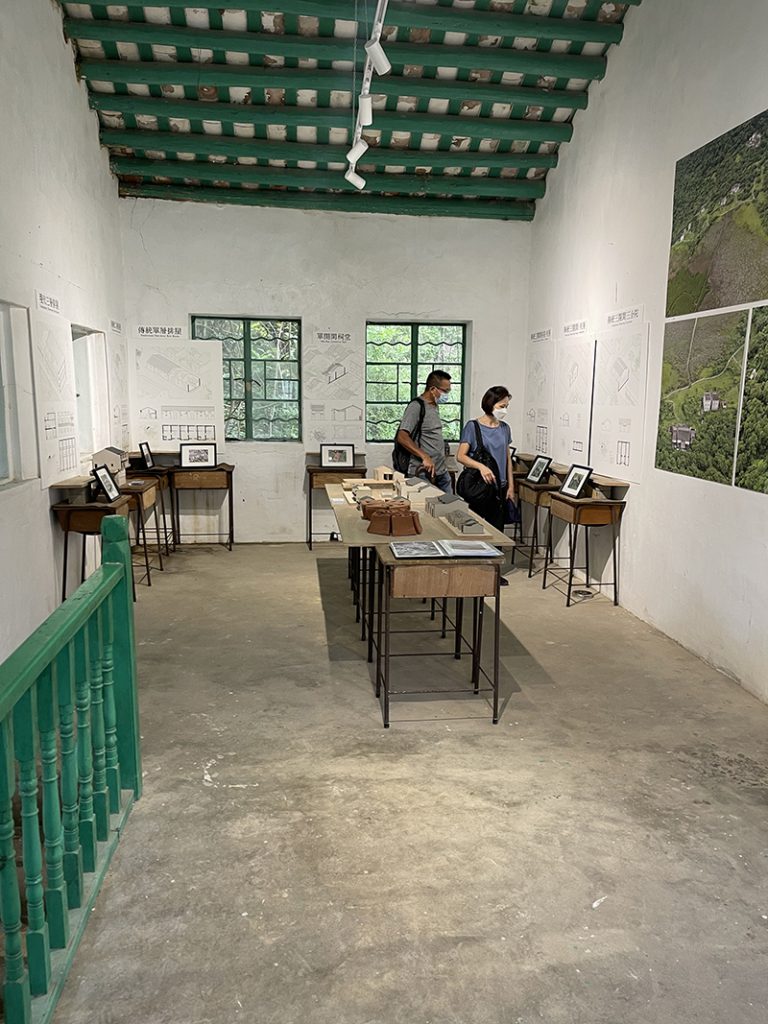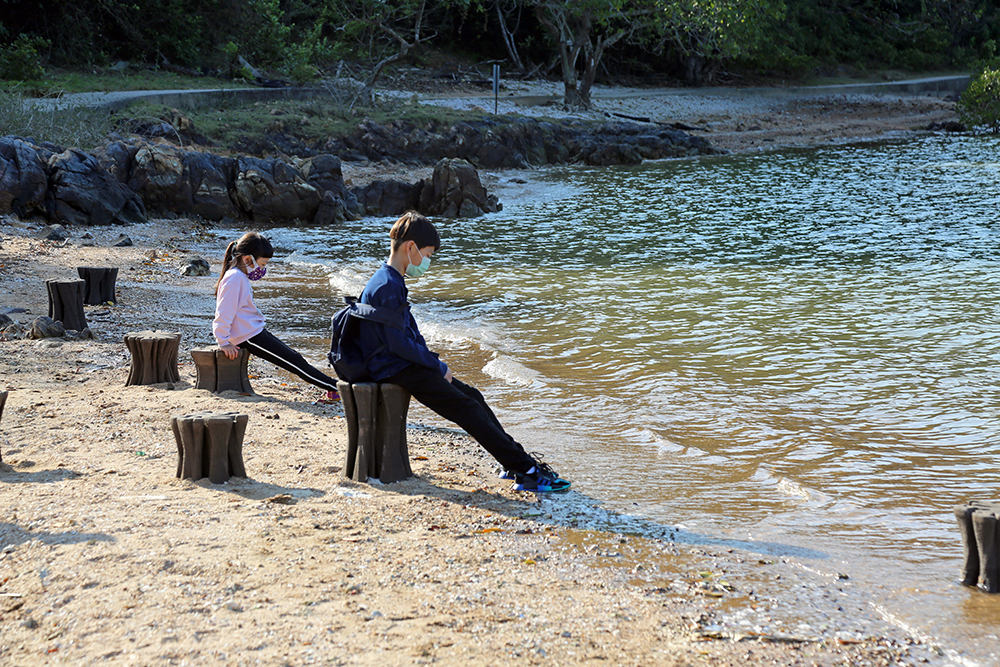November 2022 | Volume 24 No. 1
Vision for a Village
Kuk Po village and the surrounding valley lie next to the sea facing China’s industrial conglomerate Shenzhen. It has been largely empty for decades as villagers left rural life for the city. More recently though, their descendants are showing renewed interest in Kuk Po and the task of realising a revitalisation vision has fallen to the Faculty of Architecture, under the leadership of Professor Wang Weijen, and sponsored by the Countryside Conservation Office.
“This valley was originally a natural bay, then it was developed into agricultural land by early Hakka immigrants and became paddy fields,” said Professor Wang, who is Andrew K F Lee Professor in Architecture Design and Head of HKU’s Centre for Chinese Architecture and Urbanism. “More recently – partly due to border zone restrictions, lack of infrastructure and no vehicular access – villagers began to leave, the school closed and the area gradually turned into mangrove swamp and natural wetland, now zoned as conservation land. With few residents remaining, it’s dotted with abandoned houses in various states of ruin and now interwoven with nature.”
Topmost in Professor Wang’s approach was how to preserve not only the natural landscape and wetlands but the cultural landscape too. “Architecture students spent over a year surveying and creating drawings of the traditional houses and the landscape. And then we began an ‘acupuncture approach’ – going point-to-point, asking where the opportunities are to make small improvements, and what the villagers want, coordinating experts, then moderating progress and looking after the environment as we go.”
The vision so far has included activating the reuse of Kai Choi School and temple, a heritage building, which the team has turned into a community space for an exhibition and forum to help attract interest in the Kuk Po Vision. “In parallel with the exhibition, we also curated two outdoor installations interacting with the natural landscape: the Tidal Stools (clay constructions) on the beach, and the Field Theatre (wood constructions) along the embankment, looking at both the sea and mountain,” said Professor Wang.
The next step is to establish a Village Common Room by renovating an annex building of the school into a community centre, adding an eco-toilet, and creating a village entrance patio as a public space. “We also want to conserve several ruin houses – houses where trees have grown through the building, leaving a beautiful composition of nature and construction – into ‘Ruin Gardens’ with some new facilities like paving, seating, and a pavilion for visitors. The emphasis for the whole vision is very much on preserving and enjoying what is there,” he said.

The Kuk Po Vision exhibition displays the valley’s transformation of wetlands with its ecological diversity, the typological evolution of village houses and settlements, as well as the collective memory and aspirations of the community.
Tidal Stools
Earlier this year, 30 Tidal Stools were installed in Kuk Po’s wetlands. “This seaside seating not only serves as an art installation but the stools are also designed to encourage small marine lives to hide between the spaces,” said Associate Professor Christian Lange, Head of Architecture’s Robotic Fabrication Lab. “During high tide, the stools are partially submerged in the water. During low tide, they invite the villagers and visitors to take a break and enjoy the beach.”
Working with a team of students, Mr Lange designed the stools inspired by traditional Chinese round chairs and the roots of mangrove trees. “We also took advice from marine biologists to draw up geometric shapes, and used algorithms to make them more complex before printing the ceramic clay shapes, layer by layer, using 3D technology.”
“As a teaching and learning tool for Architecture students, the project addresses issues of how to generate novel dynamic and active architectural landscapes with computational design methods and innovative material systems in conjunction with an ecologically-aware design approach,” added Mr Lange. “We had students and research assistants involved at the design and manufacturing phases. They were able to participate and learn all aspects from conceptual design phase to robotic programming and material handling.”

Tidal Stools were installed in Kuk Po’s wetlands, serving as an art installation and also designed to encourage small marine lives to hide between the spaces. With this seaside seating, villagers and visitors can take a break and enjoy the beach during low tide.
Field Theatre
The Field Theatre project was created to help visitors revel in the landscape from a new perspective. Assistant Lecturer Tianying Li and Adjunct Assistant Professor Su Chang, working with Professor Wang, led their students to design and create wooden viewing structures encouraging people to orient their bodies towards the surrounding landscape.
Ms Li describes the technique as, “conceiving architecture as a tool to establish our bodily relationship to geography, as well as its efficacy to help humans make sense of the secrets and potentialities of the territory.”
Practical lessons for the students included the design of the wooden structures and overcoming the challenge of Kuk Po’s remote location, with limited access via small boats only. “They decided to make prefabricated structures,” said Ms Li. “We chose the most lightweight material of standardised woods, commonly found in Hong Kong and workable on-site. The designs were partly informed by the maximum weight a single person can carry and the size of the boat.”
Some of the structures were placed half a metre above Kuk Po’s linear concrete water dam, the extra height elevating people above the dense plants surrounding them. Others were placed near trees. “Fascinated by the various postures of the trees, our structures reacted accordingly,” said Ms Li. “They simulated adjacent trees while keeping a minimum touch on the ground and on the trees, thereby becoming performers in the theatre of the landscape.”
The emphasis for the whole vision is very much on preserving and enjoying what is there.

PROFESSOR WANG WEIJEN

